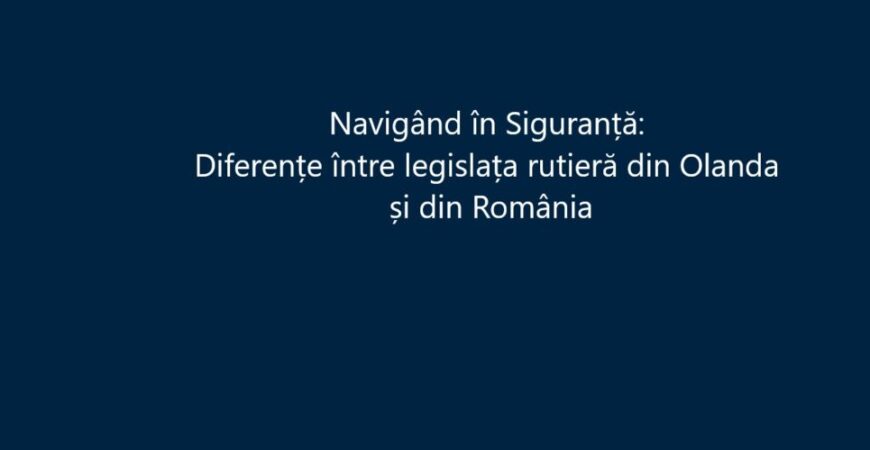Safe Travels: Differences Between Road Traffic Laws in the Netherlands and Romania
In my work in the Netherlands, I have noticed that changing cultural environments often brings surprises and challenges. One of the main causes of these (sometimes unpleasant) surprises is the intersection of the two legal systems: the Romanian and the Dutch. This aspect of cultural shock also shows up when it comes to road traffic rules. To avoid unpleasant surprises, I decided to make a brief comparison between the perspective of the Dutch legislator and that of the Romanian legislator regarding driving under the influence of alcohol.
In Romania, the legislation is strict: driving under the influence of alcohol is not allowed. With a blood alcohol level of up to 0.8‰, the act is considered a misdemeanor, and above that threshold it becomes a criminal offense. This approach reflects a zero-tolerance policy towards alcohol consumption while driving.
In contrast, the Netherlands adopts a somewhat more flexible, but no less serious policy. Here, the legal limit is 0.5‰ blood alcohol level or 220 micrograms of alcohol per liter of exhaled air. Moreover, for novice drivers, that is, those with less than 5 (five) years of experience, the threshold is even more restrictive, set at just 0.2‰. This limit also applies to individuals under 24 years of age who drive mopeds, motorized bicycles, and scooters.
I have often noticed that citizens from other countries, when they arrive in the Netherlands, only remember that this country allows driving under the influence of alcohol, but they overlook the limit up to which it is permitted. As a result, they sometimes end up drinking seven or eight beers instead of one or two and then getting behind the wheel.
Each of us reacts differently to alcohol consumption, depending on certain factors such as: body weight, whether or not we’ve eaten before/during/after drinking alcohol, how often we usually drink, our level of fatigue, etc. The consequences of alcohol consumption include decreased ability to drive, which can lead to accidents resulting in fatalities and/or serious bodily injuries.
The best thing is to have fun responsibly. When we’ve consumed alcohol and are out with a car, it’s best to take a taxi, an Uber, public transport, or ask a friend who hasn’t been drinking to drive.
However, if none of these options are possible, it’s best not to drive if you think there’s any risk you’ve exceeded the legal limit. For this purpose, you can use various phone apps as a guideline, such as “Zero la mie”. This app, developed in partnership with the Romanian Traffic Police and the Institute of Forensic Medicine, is designed to help users estimate how long it will take to reach a blood alcohol level of 0‰, based on variables like gender, height, weight, the quantity and type of alcohol consumed, and the time passed since consumption.
In the Netherlands, a driver who is caught driving under the influence and stopped by the police often faces two parallel procedures: a criminal procedure, which can result in a penalty, and an administrative procedure conducted by the CBR, the organization responsible for driving licenses in the Netherlands.


